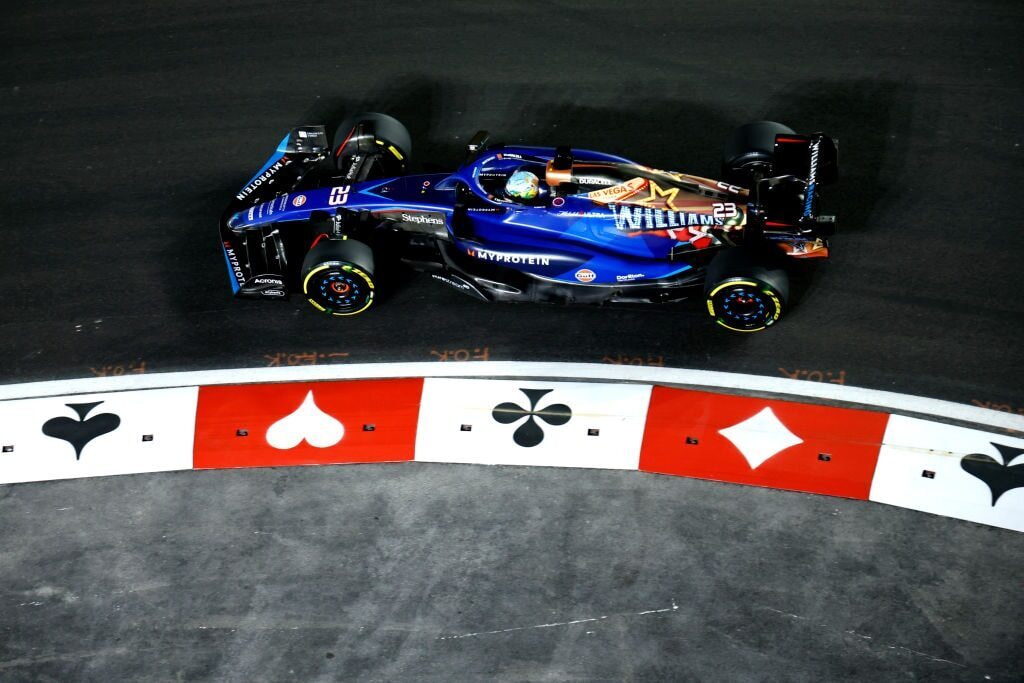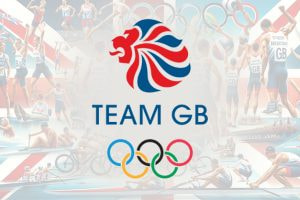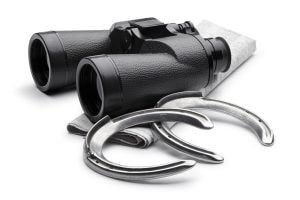How to Bet on Formula 1 – The Things You Need to Know
Are you a Formula 1 convert? Are you a new fan of the sport with interest sparked by Netflix’s Drive to Survive or gripped by the tense season-long battle between Max Verstappen and Lewis Hamilton in 2021? If so, you are in good company. Formula 1 has doubled in popularity and size, using almost every metric, since 2017.
The figures include betting on Formula 1. Max Verstappen may have dominated the sport – winning 33 of the 44 races that comprised the 2022 and 2023 seasons – but this degree of certainty has led F1 bookmakers to devise an ever-greater number of betting opportunities that do not involve this perpetual odds-on favourite.

Successful punting on Formula 1 requires knowledge, form study and a nose for betting value. It is not a turn-of-the-card or simple red/black betting medium. ©GettyImages
This expert guide will explain the race weekend structure – as you can bet on practice and qualifying sessions – and highlight some of the most popular Formula 1 betting markets. Furthermore, we will look at the factors to consider when betting on this, the fastest-moving of all sports.
24 Races for Formula 1 in 2024
This year’s Formula 1 championship began at the beginning of March in Bahrain and will continue until the Abu Dhabi Grand Prix in December. There are 24 races on the F1 calendar. The Brazilian and Australian Grand Prix are the only races staged in the southern hemisphere.
The so-called ‘European Season’ begins at the end of May with the famous Monaco Grand Prix. Eight of the following nine races will take place in Europe – with a trip to Montreal for the Canadian Grand Prix in June the only detour.
Each season, Formula 1 takes a three-week summer break. This year, it will run between Monday, July 29 (the conclusion of the Belgian Grand Prix) and Friday, August 23, when practice for the Dutch Grand Prix begins. During this period, factories are closed and teams are not allowed to develop their race cars in any way.
How Does a Formula 1 Weekend Work?
Most Formula 1 race meetings take place over three days. On Fridays, there are two one-hour practice sessions – Free Practice 1 (FP1) and Free Practice 2 (FP2). Saturday begins with a third Free Practice session (FP3).
According to Formula 1, “FP1 is typically used to ensure the car works and behaves as it should before the drivers begin to get a feel for the track. FP2 is generally reserved for longer stints on the track as drivers prepare for the race, although part is usually used for qualifying simulation runs when conditions mirror the expected conditions. In FP3, drivers tend to focus on shorter runs to get ready for qualifying.”
Qualifying takes place on Saturday afternoons. It is split into three defined stages – Q1, Q2 and Q3 – which last 18 minutes, 15 minutes and 12 minutes, respectively. Using drivers fastest lap times, the five slowest drivers are eliminated after the first stage and will start the race between 16th and 20th.
Five more drivers will drop out in Q2 when a new set of times are recorded. These will start the race in positions 11th down to 15th. The ten remaining drivers head into Q3 to determine the top-10 grid slots. The fastest driver will take pole position for the next day’s race.
There are some exceptions to this rule/format. During the 2024 season, six ‘sprint weekends’ are scheduled. These involve a practice session followed by a ‘Sprint Shootout’. Similar to standard qualifying, it creates a starting grid for a Saturday sprint race.
Sprint races are only 100 kilometres long, but they offer World Drivers’ Championship points on an 8-7-6-5-4-3-2-1 basis. Saturday continues with the traditional qualifying format in the afternoon, which sets the grid for a Sunday Grand Prix. Points in Sunday races are awarded as follows: 25-18-15-12-10-8-6-4-2-1.
What Are the Formula 1 Race Distances?
The minimum length of a Grand Prix is 190 miles (305 kilometres). However, no two circuits are alike, meaning races on smaller tracks have more laps than those on bigger ones. As ‘short circuits’, the Dutch Grand Prix at Zandvoort and Monaco are both races scheduled to be raced over 70-plus laps.
Circuit de Spa-Francorchamps, home to the Belgian Grand Prix, is the longest track at over seven kilometres. Resultantly, its race is only 44 laps in length. One hundred and ninety miles is not a set distance. Based on projected race time, Formula 1 decides the exact number of race laps at individual circuits. Ninety minutes is considered the ideal duration.
There are three different track types: hybrid, street and traditional. Street circuits include the iconic Monaco and Singapore. Hybrids are a mix of public roads and purpose-built tracks – such as the Circuit Gilles Villeneuve in Montreal, Canada, and Miami. Silverstone and Hungary’s Hungaroring are examples of Traditional tracks.
Why Is Downforce Important for Engineers and Punters?
For engineers, track variety is all about ‘downforce’ – the aerodynamic forces that push the cars onto the circuit. At tracks with plenty of cornering, cars need to be ‘high downforce’ configured. However, applying wings that generate downforce also causes drag, a handicap in long, fast straights.
Fast tracks, with plenty of high-speed sections, typically require cars to be configured with a low-downforce set-up. Circuits classified as ‘low downforce’ include Italy’s Monza and Spa-Francorchamps. However, regardless of what wing levels are applied to a car, savvy Formula 1 punters will know which cars perform better on high (or low) downforce tracks.
What Should I Consider When F1 Betting?
Downforce is to Formula 1 what ‘going’ is to horseracing. Be sure to know the characteristics of the circuit in which you intend to place your bets. Cars will consistently gain their best results on specific categories of tracks.
Keeping a good eye on the weather forecast is also prudent. Races on wet circuits are far more prone to incidents, mishaps, and poor calls from team strategists. Consider the likelihood of your selection being involved in an accident. Historical results show street circuits attract more crashes than any other.
Form study is everything. Before placing your Formula 1 bets, do your due diligence. Drivers can incur grid penalties for several reasons – including changing engine parts or a gearbox between qualifying and race day. If a driver appears over-priced, it may be because he is starting the following day’s race ten places further back from where he qualified.
What Are the Formula 1 Betting Options?
The most basic Formula 1 bets are ‘race winner’ and ‘podium finish’ – which means for a driver to finish in the first three places in the race. But the betting opportunities begin at the start of a season with outright betting on Formula 1’s World Drivers’ Championship.
This market will remain open throughout the year and be updated as drivers’ points tallies are accumulated. With the current domination of Max Verstappen, bookmakers run a second outright championship market, excluding him in a ‘without the favourite scenario’.
Season-long team and driver match-up markets – based on the number of World Championship points won – are also introduced at the start of the year and updated throughout proceedings. Commonly, teammates are pitted against one another in these markets. And so are closely matched teams – Aston Martin versus Mercedes, for example.
On individual race weekends, proceedings begin on Fridays with betting options on the first practice session. You can bet on who will top the timesheets on all three practice sessions. But things hot up on Saturdays with many markets on race qualifying appearing.
Before reading what is available to punters, consider how you can bet on Formula 1. Alongside traditional bookmakers, companies such as Spreadex will allow you to spread-bet on outcomes. And betting exchanges will allow you to assume the role of bookmaker by laying bets from other keen punters.
The Real F1 Fun Begins on Saturday
Qualifying normally provides a strong indicator as to how the race will shape up. Although there can be surprises, the podium finishers usually qualify within the top five. Punters can bet on the qualifying ‘winner’ (the fastest qualifier) and the time gap between that driver and the second fastest.
Markets on individual drivers reaching Q2 and Q3 are also available. Furthermore, bet options on both cars/drivers (of specified teams) reaching the Q3 stage and driver head-to-head markets appear following the conclusion of the third practice session.
The best Formula 1 betting sites will offer over 40 betting markets on Sunday races. Most are self-explanatory, such as the winning car, winning margin, fastest lap, whether there will be a safety car period during the race, how many appearances the safety car will make, the first driver to retire, first constructor retirement, and number of race leaders.
There are also markets on the following eventualities: the number of classified drivers, the driver that will finish last, specified drivers not to finish the race, forecasts and tricasts, the race leader after the first lap, individual drivers to lead a race lap, the number of drivers from the same team that will be classified as a finisher.
More Rules and More Bets
The term ‘classified’ does not necessarily mean completing the race. Under Formula 1’s rules, any driver that completes 90 percent of a race’s scheduled distance is declared to be ‘classified’. It is also vital to know that the definition of a ‘points finish’ means a top-10 finish – as points are awarded for finishing positions 1-10.
Suffice it to say that Formula 1 betting sites have markets on individual drivers finishing in the points, the total number of points a team will win, and the highest scoring constructor – based on their points haul. Similarly, there are team match betting options (based on points) and driver match bets decided on finishing positions.
Other Formula 1 betting markets are more complex. Bets are offered on individual drivers achieving the ‘grand slam’. This term refers to a driver starting from pole position, winning the race and setting the fastest lap. You can wager on a ‘red flag’ during the race – the colour of the flag displayed when drivers are instructed to return to the pits because the race has been stopped.
Pitstops have their own subcategory in Formula 1 betting. You can place wagers on the first and last drivers to make a stop. With Formula 1 providing official times, bookmakers regularly offer prices on the team or driver to perform the fastest pitstop during a race.
The times are recorded while cars are stationary, not the overall time spent in the pitlane. Drivers are subject to an 80 kilometres-per-hour speed limit when travelling down the pitlane. If the limit is broken, drivers will be penalised. Remarkably, ‘caught speeding in the pitlane’ is an outcome you can bet on!
Summary Of Our Formula 1 Betting Guide
Knowing how to bet on Formula 1 and exploit opportunities stems from knowledge and experience. At the very least, learning the basics is vital. Take time to familiarise yourself with the terms and betting markets. In equal proportion, make your selections based on educated opinions.
The learning curve is a slow process that should not be rushed. It could take the best part of an entire season before you know all drivers, cars, teams and the characteristics of the circuits. These are vital ingredients in making informed decisions. Blindly backing favourites in Formula 1 is a fast track to the poor house.
Formula 1 is an exhilarating business, and with new markets, especially live in play, popping up every season, there is a lot to sink your teeth into. As always, be sure to get the best prices on your bet selections by shopping around at the best motorsport betting sites. Our final advice: try not to be biased by having and supporting a favourite team or driver.



